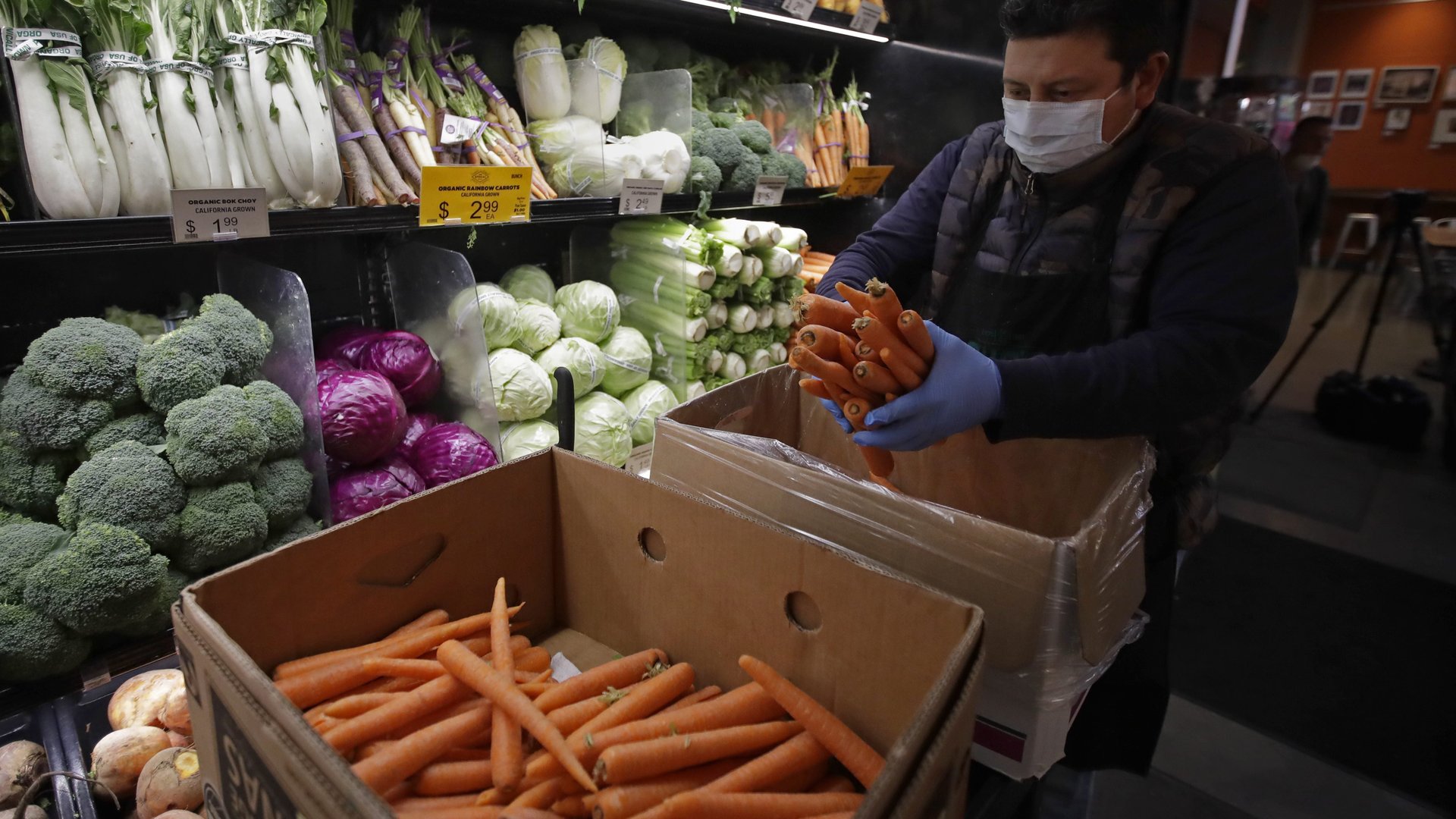SNAP is key to the US coronavirus response
The Supplemental Nutrition Assistance Program (SNAP) will be the US’s unheralded weapon in the coronavirus relief response. After unemployment insurance and the recently-passed $2 trillion coronavirus relief package, the program, formerly known as food stamps, may be the the most important way that the federal government will get resources into the pockets of suffering Americans. In 2018, about 34.5 million US households received $54 billion from the program—an average of $1,600 per family—that can only be used to buy food.


The Supplemental Nutrition Assistance Program (SNAP) will be the US’s unheralded weapon in the coronavirus relief response. After unemployment insurance and the recently-passed $2 trillion coronavirus relief package, the program, formerly known as food stamps, may be the the most important way that the federal government will get resources into the pockets of suffering Americans. In 2018, about 34.5 million US households received $54 billion from the program—an average of $1,600 per family—that can only be used to buy food.
The number of SNAP recipients is likely to skyrocket during a coronavirus-led recession. SNAP is available to households that make less than 30% above the US federal poverty line (about $28,000 for a family of three) and have less than $2,250 in their bank account. In rough economic times, the number of people who qualify rises fast. After the 2008 financial crisis, the number of households receiving SNAP grew from just 28 million in 2008 to 47 million in 2012. SNAP recipients are only allowed to spend the money on groceries, and cannot use it to buy alcohol or prepared food.
It is difficult to know exactly how much SNAP use will increase because of the economic consequences of coronavirus, but data from California suggests it is likely to be large. For Californians, about 30% of applications for SNAP go through the website GetCalFresh, which is run by the non-profit Code For America. According to daily data in February and March, applications rose from less than 1,500 in January and early February to over 6,000 in the second half of March. The majority of applications are approved.
Utah, Georgia, and Louisiana have all also confirmed large increases in the number of applications. In recognition of this surging demand for SNAP, the federal government’s coronavirus relief bill, signed into law on March 27, includes an additional $16 billion for SNAP in 2020, to make sure the program has enough funding. The federal government has also made it easier for residents to receive SNAP by waiving the requirement that states interview all recipients before they are approved (the program is run by states though the money comes from the federal government).
Like unemployment insurance, SNAP is what economists call an automatic stabilizer. Many economists believe these are the best types of welfare programs. Rather than requiring the government to enact new bills for every crisis, automatic stabilizers quickly respond to the needs of those who have lost jobs and pump money into the economy. When the economy is doing well, the number of people on these programs naturally falls.
Automatics stabilizers are not as large in the US as they are in Europe. One study found that, when people become unemployed in Europe, about 47% of an individual’s lost income is made up for by automatic stabilizers, compared to just 34% in the US. After this crisis is over, US lawmakers may want to consider boosting the benefits for programs like SNAP, unemployment insurance, and Temporary Assistance for Needy Families (TANF), which get money quickly to the neediest when times are bad. It might make it easier for the government to handle the next crisis.